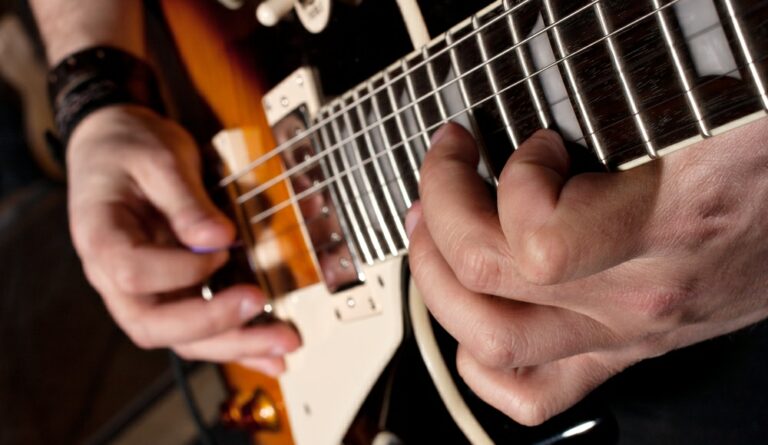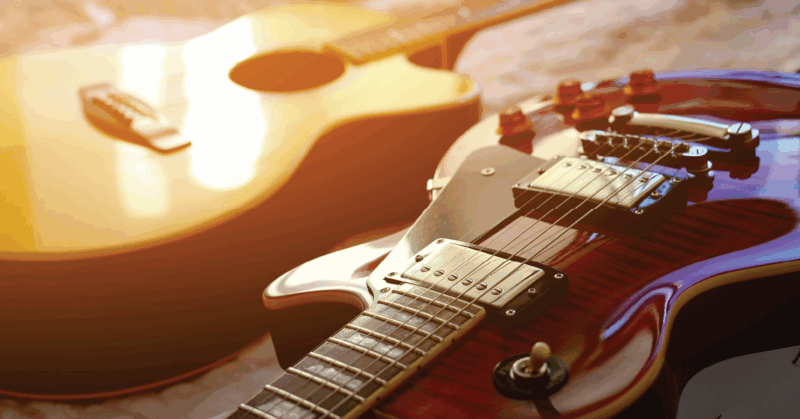Acoustic Guitar and Electric – What’s the Difference and Which is Right for You?
Introduction
When it comes to choosing a guitar, one of the first decisions every player faces is between acoustic and electric. While both share common roots, they differ significantly in construction, sound, use cases, and the types of music they’re associated with. In this guide, we’ll explore everything you need to know—from the key differences and design variations to tone, affordability, and iconic players in both camps.
What Is an Acoustic Guitar?
Definition & Function

An acoustic guitar is a hollow-bodied instrument that produces sound acoustically by transmitting the vibration of the strings into the air. It requires no amplifier or electronics, making it ideal for unplugged performance and songwriting.
Acoustic guitars are also like electric guitars made from lots of different woods. These woods and the construction can effects the overall sound of the guitar so that more specific frequencies are more prevalent. We will discuss wood types in another blog but for now know not all guitars are made equal especially in acoustic guitar builds.
Some will be more high frequency which may be useful for clarity of you play acoustic lead guitar. Then some are more mid range or deeper in tone, so depending on your desired outcome you should try lots of guitars till you hear the sound that’s in your head.
Who Uses It?
- Singer-songwriters like Ed Sheeran or Taylor Swift
- Folk and country musicians
- Beginners who want simplicity and portability
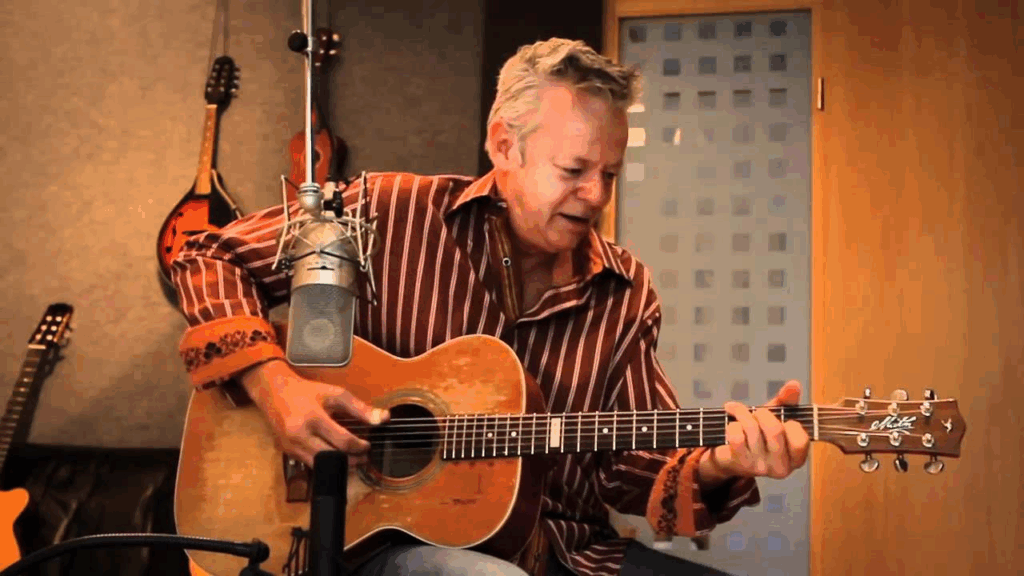
Honestly acoustic guitars are often overlooked by guitarists but they form the foundation of what we will become as musicians. Able to be played in any conditions with friends and family you can entertain right from the beginning without expensive amplifiers and other gear. If the song and you playing it sounds good or better when its on acoustic your a long way towards being a good musician already.
There are some guitarists that are simply incredible that rarely play electric guitars. A fantastic example is Tommy Emmanuel (YT LINK) who is incredible! He plays songs and full instrumentals alone on stage throughout the world with just himself and acoustic guitars. He doesn’t even have a band behind him. Check him out!
Music Styles
The use of specific guitars is not written in stone OK! You can play what ever you like with any form of music but its true some are more common and the sound is more in line with mainstream players of given music. Its your journey so you choose what you want to play and see how it works for you!
- Folk
- Country
- Blues
- Classical (for nylon-string acoustics)
- Pop ballads and unplugged rock sets
Types of Acoustic Guitar Guide
1. Dreadnought
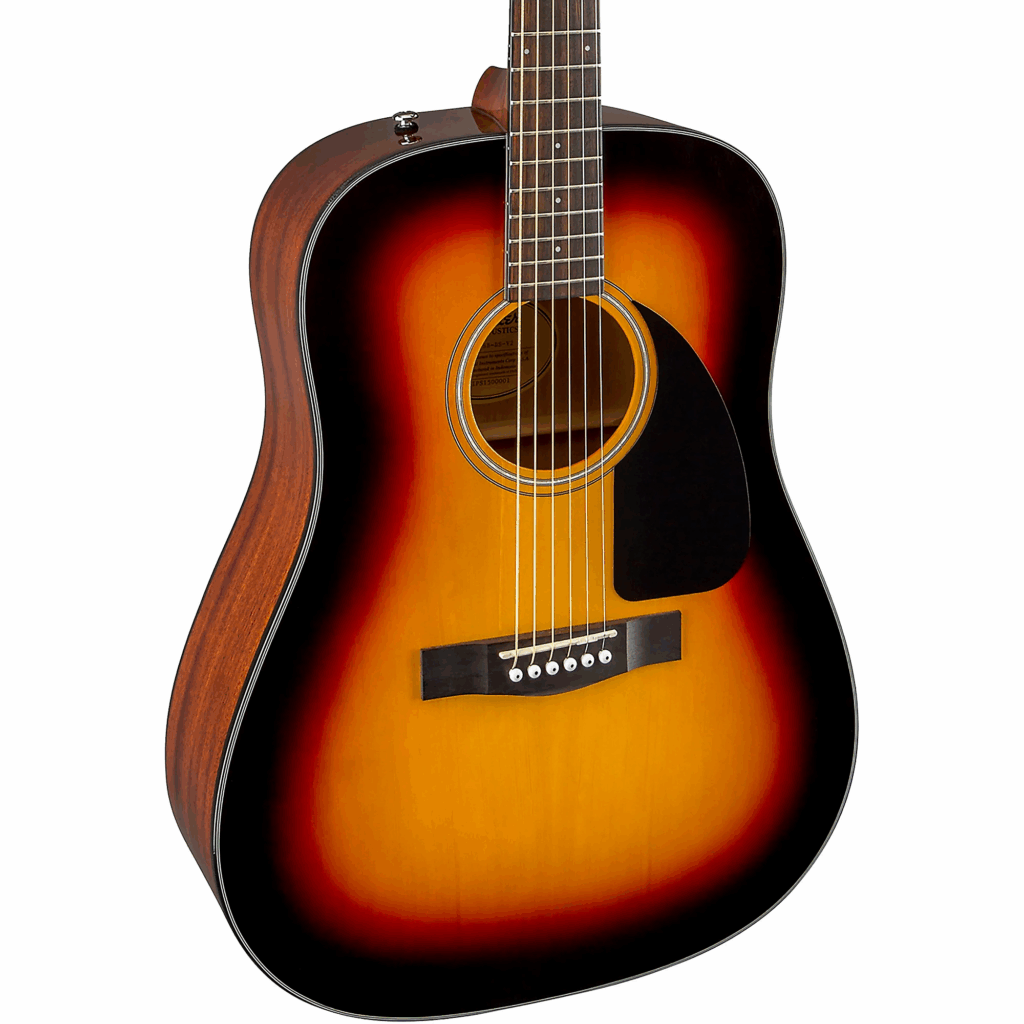
- Description: The most common acoustic shape, known for its large body and bold, powerful tone.
- Best For: Strumming, flatpicking, singer-songwriters, and country.
- Tone: Boomy bass, strong midrange, and good volume projection.
Simply a very big guitar body, thick and full of sound.

2. Concert (and Grand Concert)
- Description: Slightly smaller than dreadnoughts, with a more balanced tone and curved waist.
- Best For: Fingerstyle playing, light strumming, and smaller players.
- Tone: Articulate, midrange-focused with less low-end.
3. Auditorium (and Grand Auditorium)
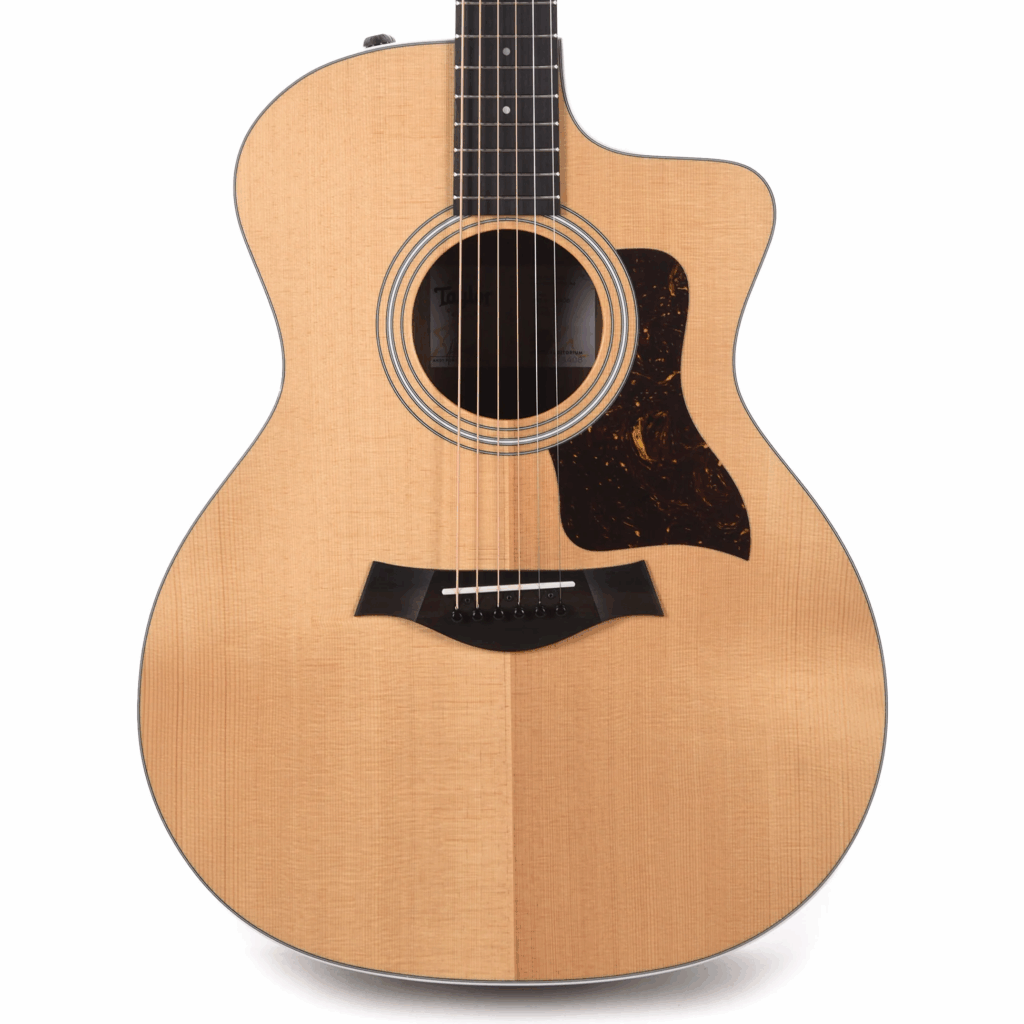
- Description: A versatile mid-size body with balanced curves and projection, larger than a concert but smaller than a dreadnought.
- Best For: All playing styles—great all-rounder.
- Tone: Balanced lows, mids, and highs.
4. Jumbo

- Description: The largest acoustic guitar body size with a deep lower bout and big sound.
- Best For: Loud strumming and country or folk rhythms.
- Tone: Big bass, lots of volume, good for open chords.
5. Parlor
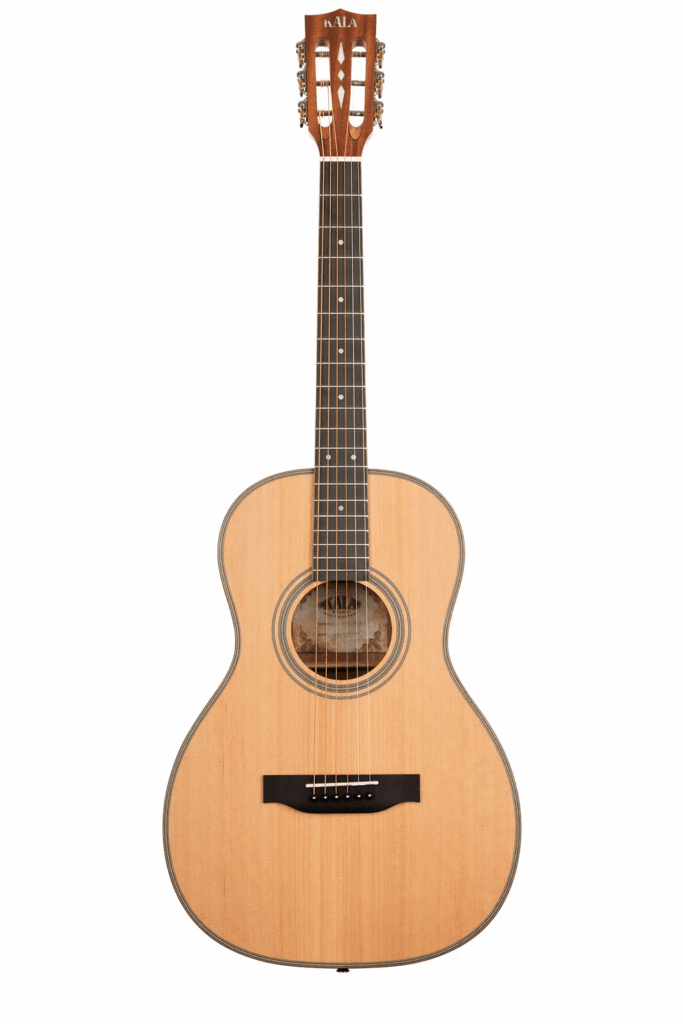
- Description: Small-bodied, narrow-waisted guitars with vintage appeal.
- Best For: Blues, folk, fingerpicking, and travel.
- Tone: Midrange-heavy, punchy and clear, less bass.

6. Travel / Mini
- Description: Compact, scaled-down acoustics designed for portability and beginners.
- Best For: Travel, children, or practice.
- Tone: Light, with limited projection and bass.
Convenient but probably not going to knock the house down with massive sound.

7. Classical (Nylon-String)
- Description: Uses nylon strings, wide flat neck, and slotted headstock. Played fingerstyle.
- Best For: Classical, flamenco, Latin, and folk music.
- Tone: Warm, soft, mellow sound with minimal string tension.
The usual idea of a beginners guitar with the nylon strings. DO NOT Buy one then put steal strings on it! Done far to often these guitars cannot handle the steal strings and usually split the top of pull the bridge off! There is normally no truss rod supporting the neck and it bends too. Great guitars but only with the correct NYLON strings OK!
What Is an Electric Guitar?
Definition & Function
An electric guitar uses magnetic pickups to convert string vibrations into electrical signals, which are then amplified. Without an amp, the guitar produces very little sound, but with one, it can produce everything from smooth jazz tones to high-gain metal distortion.
Who Uses It?
- Rock and metal guitarists
- Jazz musicians
- Blues and fusion artists
- Studio musicians needing tonal versatility
Music Styles
- Rock (classic, hard, alternative)
- Metal
- Jazz
- Funk
- Blues
- Punk
Here are the main types and styles of electric guitars that every new buyer should know, along with brief descriptions to help identify them by sound, design, and typical use are below but as important are the pickup styles and configurations that will follow in a future blog post.
General Electric Guitar Styles.
1. Stratocaster (Strat Style)
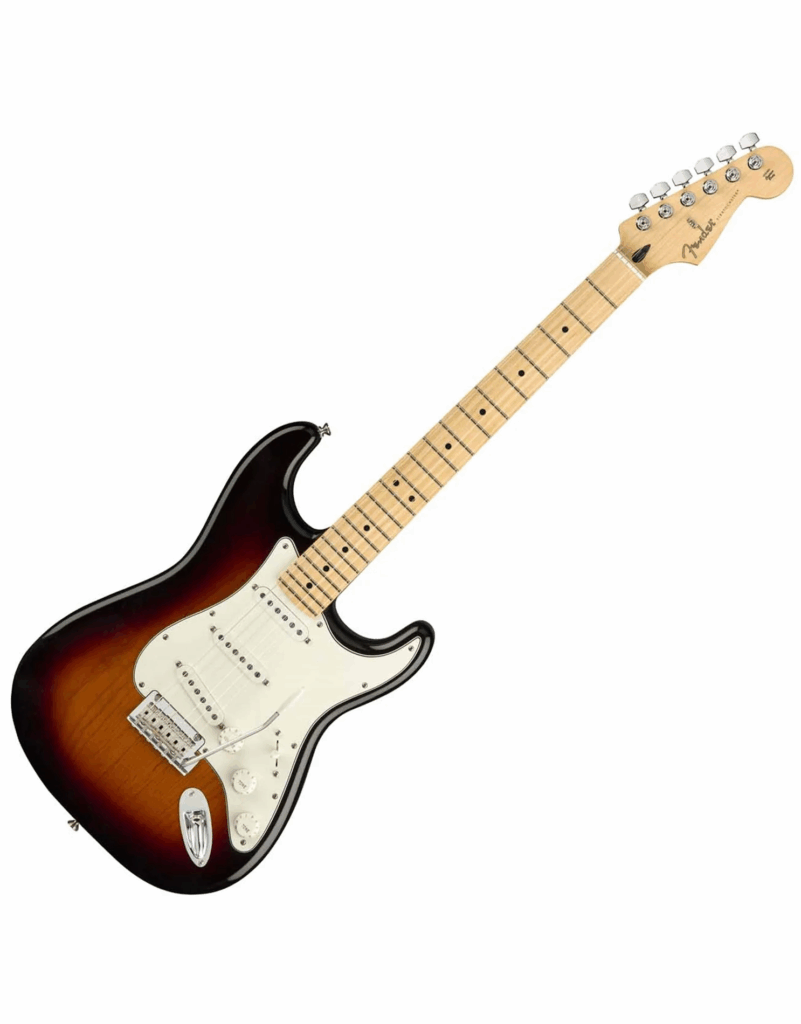
- Features: Double-cutaway body, three single-coil pickups, tremolo bridge, contoured shape.
- Known For: Versatility, clean tones, and smooth playability.
- Used In: Blues, pop, rock, funk, surf.
- Famous Players: Jimi Hendrix, Eric Clapton, John Mayer.
Classic design style from the 1950 and still popular today! Generally a thinner sounding guitar with clear bell like tones from the strings. Classic clarity of tone but still able to rock out hard! See Jimmy Hendrix for details or David Gilmores classic souring solos in Pink Floyd! Very versatile!

2. Telecaster (Tele Style)
- Features: Single-cutaway body, two single-coil pickups, simple electronics, bright twangy tone.
- Known For: Simplicity, sharp attack, and clear tone.
- Used In: Country, blues, rock, punk.
- Famous Players: Keith Richards, Bruce Springsteen, Brad Paisley.
Very often found in country music the Tele has distinctive sound similar to a strat in its clarity but widely used in Rock as well. See John Five as a great example of a Tele being used where you wouldn’t expect to see it.
3. Les Paul

- Features: Single-cutaway, carved top, dual humbuckers, set neck, heavier body.
- Known For: Warm, thick sustain and rich harmonics.
- Used In: Rock, metal, jazz, blues.
- Famous Players: Jimmy Page, Slash, Joe Bonamassa.
For me the only guitar to own but I’m spoilt as I’ve had my Ebony Les Paul Standard since 1996 and I still Love it! Its a thick creamy tone with more mids than highs and just full of sound and sustain.
You can also find similar sounds on the PRS (Paul Read Smith) guitars but they are not the same as the Les Paul! You need to listen to both to hear the difference!
4. SG (Solid Guitar)

- Features: Lightweight double-cutaway body, dual humbuckers, slim neck.
- Known For: High fret access, punchy tone, and aggressive bite.
- Used In: Hard rock, metal, punk.
- Famous Players: Angus Young, Tony Iommi.
Yes thick hard rock powerhouse with Tony Iommi’s heavy Black Sabbath riffs and solos. Angus Young also proves you can knock the house down with thick full chords and screaming solos to deafen the crowd. Quite amazing!
5. Semi-Hollow Body

- Features: Partially hollow body with center block, dual humbuckers or P-90s.
- Known For: Warm, resonant tone with reduced feedback.
- Used In: Jazz, blues, indie rock.
- Famous Players: B.B. King (Lucille), Larry Carlton.
These can be quite full sounding but have some of those clear bell sounding notes. BB King is a great exponent of the Semi Hollow body with Gibson guitars like the ES 355 and others to get your kick here.
6. Hollow Body (Jazz Box)

- Features: Fully hollow, archtop body, floating bridge, f-holes.
- Known For: Deep, mellow tone ideal for clean jazz.
- Used In: Jazz, swing, rockabilly.
- Famous Players: Wes Montgomery, George Benson.
Very clear tones here for those blues and jazz players as well. Some thickness to the sound with again the clarity in solos thats outstanding.
7. Superstrat

- Features: Strat-style body with modern upgrades—high-output pickups, locking tremolo, fast neck.
- Known For: Shredding, heavy distortion, and technical playing.
- Used In: Metal, hard rock, fusion.
- Famous Players: Steve Vai, Joe Satriani, Eddie Van Halen.
8. Offset Body (e.g., Jazzmaster, Jaguar)

- Features: Asymmetrical body shape, unique tremolo systems, varied pickup configurations.
- Known For: Vintage looks, quirky tones, and surf rock charm.
- Used In: Indie, alt-rock, surf.
- Famous Players: Kurt Cobain, Johnny Marr.
The best of both worlds here with often humbucking pickup thick chords and solos but that bell like tones in the high end to make these super popular in Rock and Metal genres. Strat like in feel but the tonal qualities are very different.
9. Baritone Electric

- Features: Longer scale length, tuned lower (typically B–B), heavier strings.
- Known For: Deep, heavy tones for modern or experimental genres.
- Used In: Doom metal, ambient, surf, soundtrack.
- Famous Players: Stephen Carpenter (Deftones), Robert Smith (The Cure).
Very specific type of sound and probably not for the main stream player to be honest. I’ve never played one so its hard to give you a honest picture. Please check out the players mentioned to get a feel of whether this style may be good for you.
Selecting a Guitar for Yourself
Lets also consider choosing an electric guitar or really any guitar really and what you should look for.
First it should feel comfortable to hold in whatever position you envisage playing it. Sitting down or standing up it has to feel great!

The action which is a combination of many things but the string height from the fretboard should not be very much. About 1-2 mm is pretty ok. More than this its going to be a struggle to press the strings down comfortably.
Ensure it is tuned when you play it then also check the intonation to make sure its great from neck to the end of the fretboard. This is often not checked by new guitarists and they find in acoustics it often cannot be fixed. Electric guitars are a different animal with adjustable bridges so they should be ok.
Looks good, feels good, sounds good your heading in the right direction.
Design Differences: Acoustic vs Electric Guitars
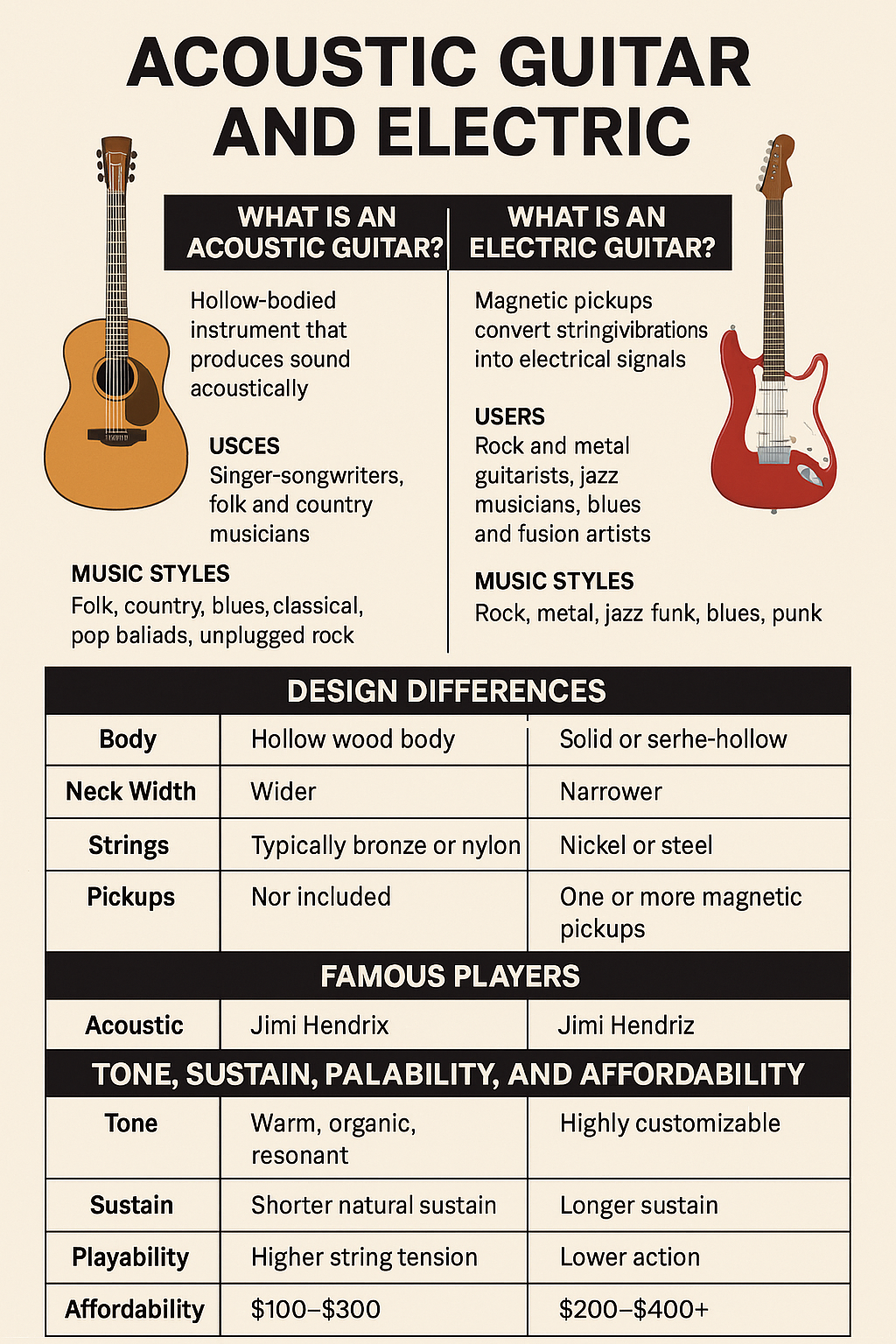
| Feature | Acoustic Guitar | Electric Guitar |
|---|---|---|
| Body | Hollow wood body | Solid or semi-hollow body |
| Neck Width | Often wider for fingerstyle | Narrower for faster soloing |
| Strings | Typically bronze or nylon | Nickel or steel |
| Pickups | Not included (unless acoustic-electric) | One or more magnetic pickups |
| Bridge | Fixed, often with pin setup | Can be fixed or floating (tremolo systems) |
| Tone Control | None or simple tone knob (if electric-acoustic) | Full tone and volume controls with effects |
Famous Players and Their Guitars
Acoustic Legends
- Tommy Emmanuel – Known for fingerstyle virtuosity on steel-string acoustics
- James Taylor – Smooth folk fingerpicking
- John Mayer – Blends acoustic pop with blues roots
Electric Icons
- Jimi Hendrix – Fender Stratocaster; known for his innovative use of tone and feedback
- Jimmy Page – Gibson Les Paul; combined hard rock with blues
- Eric Clapton – Fender Stratocaster; master of blues and rock phrasing
- Slash – Gibson Les Paul; iconic rock solos
Tone, Sustain, Playability, and Affordability
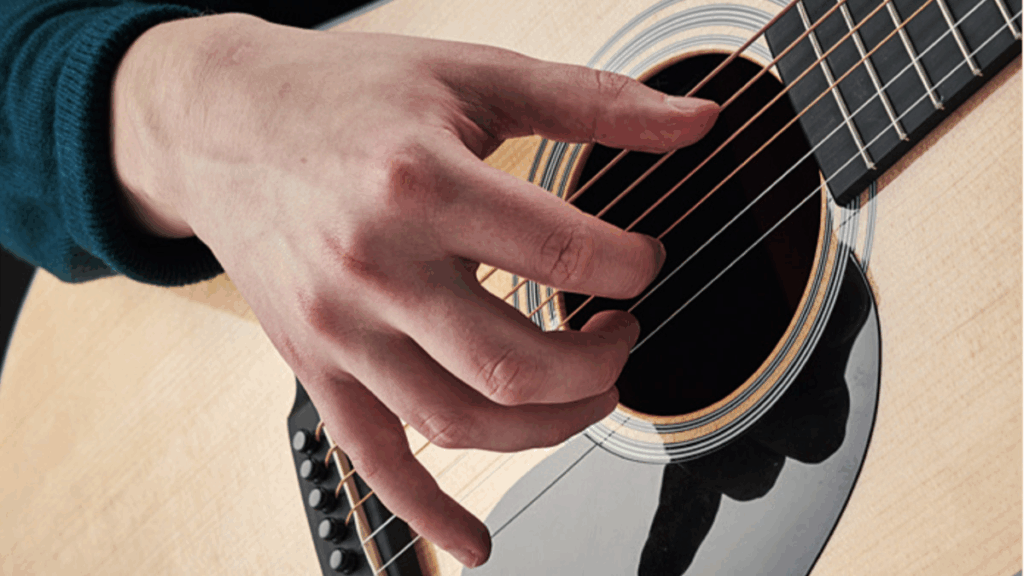
Tone
- Acoustic: Warm, organic, resonant. Ideal for natural expression.
- Electric: Highly customizable via amp and effects. Can range from clean jazz to aggressive distortion.
Play both electric and acoustic guitars unplugged and see how they sound and feel. You can tell a lot about electric guitars by playing them acoustically first. Their tone and sustain is quite obvious.
Sustain
- Acoustic: Shorter natural sustain due to wooden construction.
- Electric: Longer sustain, especially with high-gain settings and feedback.
Sustain is a great measurement of how good a guitar is. Sustain is simply how long a note or a chord continues before going quiet. Electric guitars also can be tested for sustain acoustically. PLay some chords and single notes to see how long the notes last.
Playability
- Acoustic: Higher string tension and action; more physically demanding.
- Electric: Lower action and lighter strings make it easier to play solos and fast passages.
Playability is a number of things all rolled in together for a guitarist. First does the guitar feel comfortable in your most often used playing position. THis means sitting in a chair or standing on stage does it feel good!
How does the neck feel in your hand? THere are many neck sizes and profiles so check from the nut to the body of the guitar how it feels. Some are rounded and chunky to a more wider C shallower profile to the ruler flat types and everything in between.
It has to feel great or put it down and try another. You may find your preconception of a specific guitar is disappointing and find another you hadn’t considered amazing to play. Test test test!

Affordability
- Acoustic: Budget options start around $100–$300 for quality beginner models.
- Electric: Entry-level guitars may be affordable, but additional gear (amp, cables, pedals) increases the cost. Expect ~$200–$400+ to get started.
Choosing a guitar purely by price can be a trap for sure but it also is a surprise how good the newer CNC made guitars are. You can get pretty good guitars at the lower end surprisingly. Its generally true though that more is better in general terms but not everyone can run to the store and but a Gibson Les Paul Standard at $3000 plus!
Please take your time and pickup and play as many as you can at your price point till you find the one! It may be a Les Paul copy or a Fender copy that you find is the one or it could be a Harley Benton online that is the one but buying online is a challenge because yes you can return it but its going to take a lot of time and maybe extra cost to return one your not happy with.
Which One Should You Choose?
If you want to:
- Play unplugged and focus on songwriting → Go acoustic.
- Rock out, experiment with tone, or join a band → Go electric.
Many players eventually own both for different purposes, but starting with the one that matches your goals and musical interests is the best choice.
Again, revisit the above paragraphs before buying your dream guitar so your not disappointed a week latter!
Conclusion
Understanding the differences between acoustic and electric guitars helps you make an informed decision about which best suits your musical journey. Whether you’re drawn to the warm resonance of a steel-string dreadnought or the sharp punch of a solid-body Stratocaster, there’s a guitar out there that will inspire your playing and fuel your creativity.
Its now up to you to get out there and test the waters! Go to guitar stores and play as many as they will let you until one of them speaks to you and your soul! You will know and that’s the beginning!
The Author.

Brendon McAliece is a multi lingual expatriate Australian living in Thailand who speaks Thai, a number of its dialects and Lao. He has been playing guitar since he was 12 and continues to do so to this day.
He has performing in bands across the Middle East while contracting as a Aircraft Weapons Instructor with his 10 years of RAAF Armament Fitter experience and his maintained his love for playing guitar it continues to thrive today.
Also Visit:
DreamingGuitar.com – DreamingCoffee.com – LetsFlyVFR.com
Explore More from the Dreaming Network
As an Amazon affiliate I may earnon qualifying sales.
